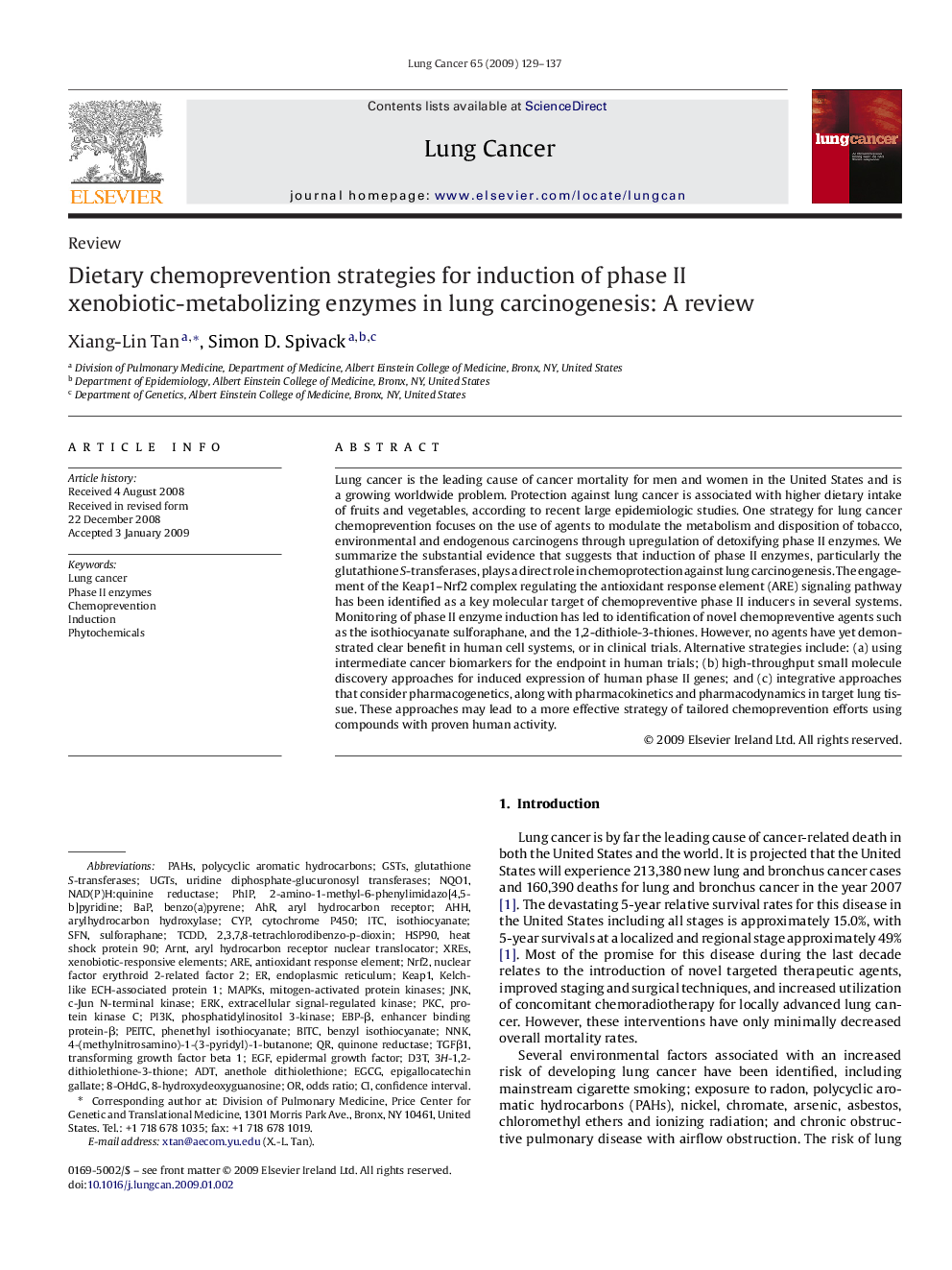| Article ID | Journal | Published Year | Pages | File Type |
|---|---|---|---|---|
| 2143178 | Lung Cancer | 2009 | 9 Pages |
Lung cancer is the leading cause of cancer mortality for men and women in the United States and is a growing worldwide problem. Protection against lung cancer is associated with higher dietary intake of fruits and vegetables, according to recent large epidemiologic studies. One strategy for lung cancer chemoprevention focuses on the use of agents to modulate the metabolism and disposition of tobacco, environmental and endogenous carcinogens through upregulation of detoxifying phase II enzymes. We summarize the substantial evidence that suggests that induction of phase II enzymes, particularly the glutathione S-transferases, plays a direct role in chemoprotection against lung carcinogenesis. The engagement of the Keap1–Nrf2 complex regulating the antioxidant response element (ARE) signaling pathway has been identified as a key molecular target of chemopreventive phase II inducers in several systems. Monitoring of phase II enzyme induction has led to identification of novel chemopreventive agents such as the isothiocyanate sulforaphane, and the 1,2-dithiole-3-thiones. However, no agents have yet demonstrated clear benefit in human cell systems, or in clinical trials. Alternative strategies include: (a) using intermediate cancer biomarkers for the endpoint in human trials; (b) high-throughput small molecule discovery approaches for induced expression of human phase II genes; and (c) integrative approaches that consider pharmacogenetics, along with pharmacokinetics and pharmacodynamics in target lung tissue. These approaches may lead to a more effective strategy of tailored chemoprevention efforts using compounds with proven human activity.
